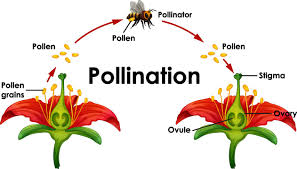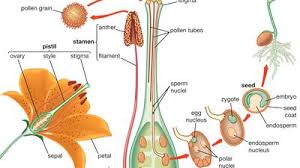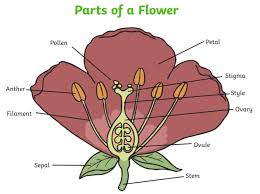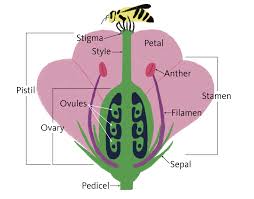The mode of reproduction in crop plants plays a significant role in determining the breeding method to use and largely influences the type of variety produced.
Understanding the mode of reproduction is essential for practical breeding, as it affects various factors such as genetic makeup, breeding techniques, and the characteristics of the crops.
Read Also: General Principles of Goat Production
1. Kinds of Flower in Crop Plants

i. Complete Flowers: These flowers contain all four organs—sepals, petals, stamen, and pistil. Examples of crops with complete flowers include cotton, tobacco, potatoes, and soybean.
ii. Incomplete Flowers: These flowers lack one or more of these organs. Crops like corn, sorghum, wheat, and rice have incomplete flowers, where petals and sepals are absent.
iii. Perfect Flowers: Both stamen and pistil are present in the same flower structure. Many crop plants, including wheat, rice, sorghum, cotton, tobacco, and soybean, have perfect flowers.
iv. Imperfect Flowers: Stamen and pistil are not found in the same flower structure. Imperfect flowers may be:
a. Staminate: Bearing stamen but no pistil.
b. Pistillate: Bearing a pistil but without stamen.
v. Monoecious Plants: Both male and female flowers are on the same plant. Examples include corn and castor bean, where corn has staminate flowers in the tassel and pistillate flowers on the shoot.
vi. Dioecious Plants: Male and female flowers are found on different plants, such as buffalo grass, hemp, and hops.
2. Types of Reproduction in Crop Plants

i. Vegetative Reproduction: This type of reproduction involves the use of vegetative parts of the plant, such as cuttings, rhizomes, or bulbs, to propagate new plants.
ii. Sexual Reproduction: Involves the union of gametes from two parent plants, leading to the formation of seeds. Sexual reproduction can be further divided into self-pollination and cross-pollination.
iii. Self-Pollinated Crops: These crops can pollinate themselves. Examples include cowpea, soybean, rice, groundnut, tobacco, tomatoes, and potatoes. The extent of natural out-crossing varies from none to around 4 or 5 percent.
Features that Encourage Self-Pollination
a. Flowers may remain closed.
b. Pollen grains may be shed before the flowers open.
c. The stigma and stamens may be hidden by floral organs after the flowers open.
d. The stigma may elongate through the stamina column shortly after the anthers open.
The process of flowering in crops is known as anthesis.
iv. Cross-Pollinated Crops: These crops require fertilization through the union of an egg from one plant and a sperm from a different plant. Maize is an example.
Features that Encourage Cross-Pollination:
a. Mechanical obstruction to self-pollination.
b. Different periods of maturity for pollen and stigma.
c. Self-sterility or incompatibility.
d. Presence of monoecious or dioecious flowers.
v. Apomictic Crops: These plants do not require the union of gametes for reproduction. Seeds are formed without the fertilization process.
vi Parthenogenesis: In this process, the egg cell develops into an embryo without fertilization. The egg cell remains unreduced (2n), meaning the embryo has the same genotype as the parent plant.
Read Also: Feed Lot Fattening of Rams Practice
3. Significance of Mode of Reproduction in Crop Breeding

The mode of reproduction influences the breeding procedure to be used and determines the type of variety to be produced. The following table summarizes the relationship between the mode of reproduction and variety type:
| Mode of Reproduction | Types of Variety Produced | Genetic Make-up |
|---|---|---|
| Vegetative | Clonal | Homozygous |
| Self-pollination | Pure line or variety | Homozygous |
| Cross-pollination | Open variety | Heterozygous |
The mode of reproduction also affects the major components of variation:
| Mode of Reproduction | Major Component of Variation | Homozygous | Heterozygous |
|---|---|---|---|
| Vegetative | Environment (Ve) | High | Low |
| Self-pollination | Environment (Ve) | High | Low |
| Cross-pollination | Genotype and Environment | Low | High |
The mode of reproduction in crop plants dictates both the breeding method used and the kind of variety produced.
This article explored the different flower structures and modes of reproduction in crop plants. Understanding these concepts is essential for successful practical breeding, as they impact the choice of breeding methods, the genetic makeup of the plants, and the varieties produced.
Do you have any questions, suggestions, or contributions? If so, please feel free to use the comment box below to share your thoughts. We also encourage you to kindly share this information with others who might benefit from it. Since we can’t reach everyone at once, we truly appreciate your help in spreading the word. Thank you so much for your support and for sharing!

